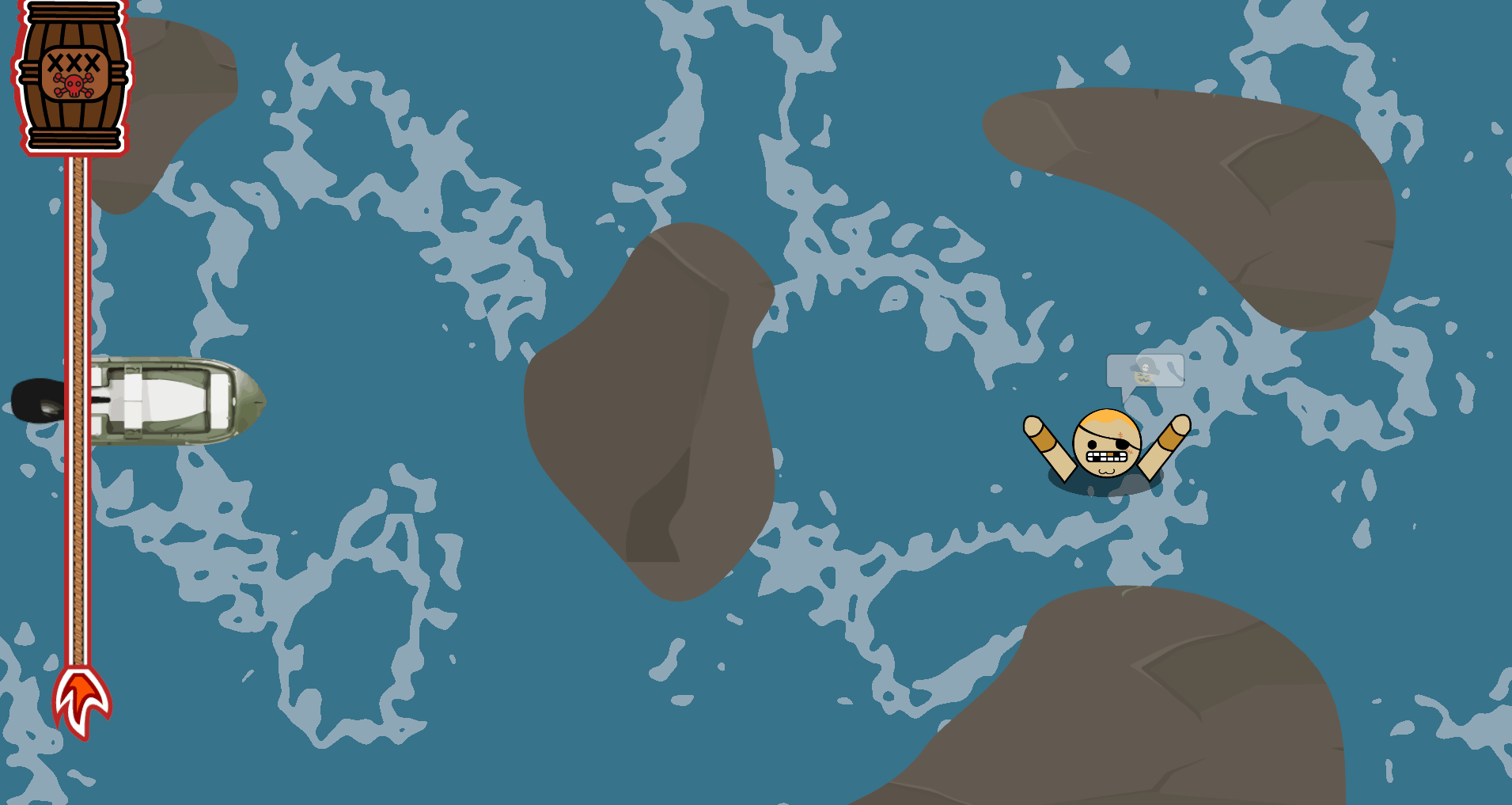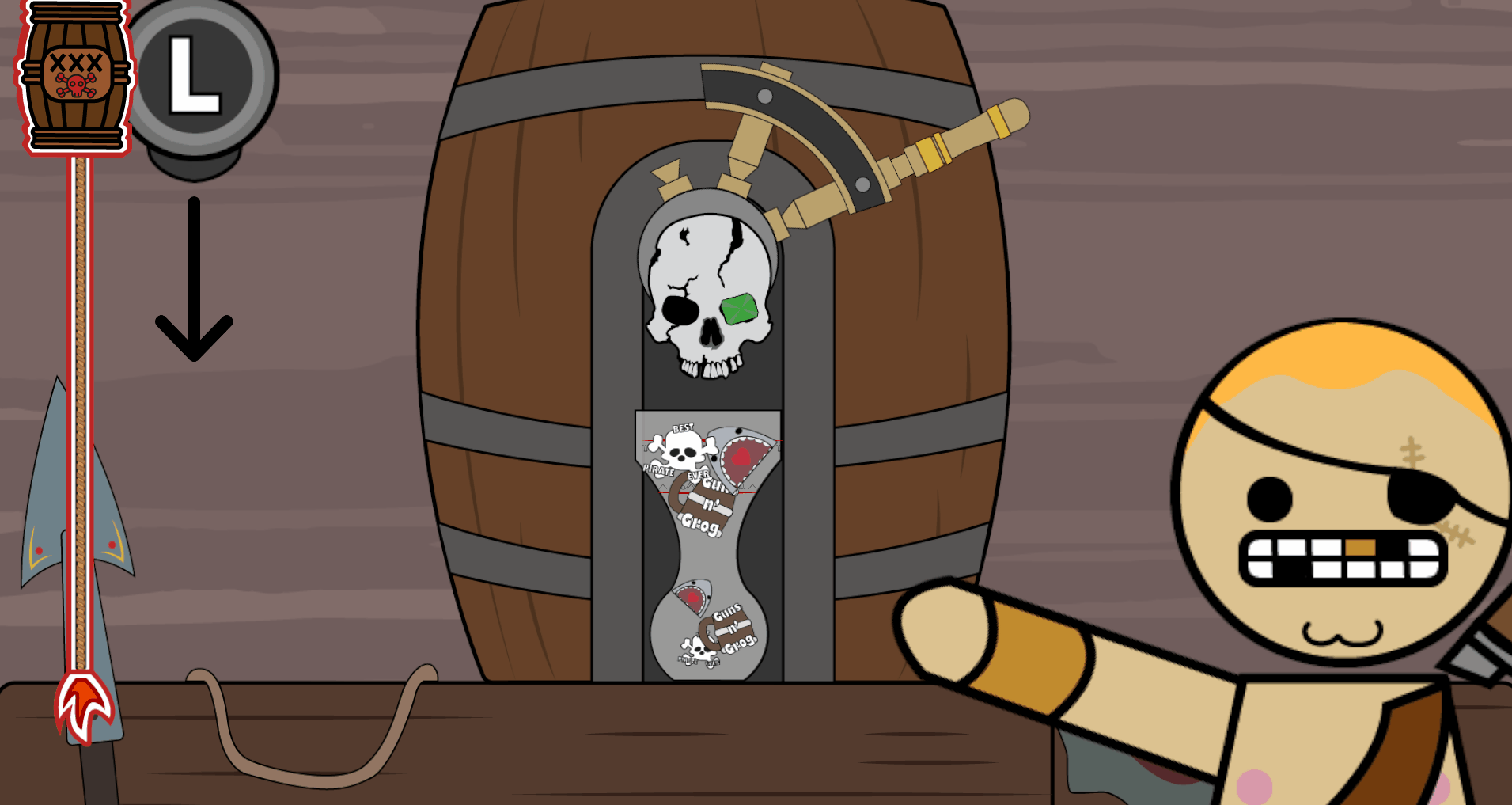-
Genre - Wario-Ware / Roguelite
-
Date - Novembre 2020 -> January 2021
-
Link -
-
Type of project - Student Game
-
Contribution - Game Designer / Game Programmer / QA Tester
Pirate Academy is a game heavily inspired by the wario-ware genre where you cruise the great sea with your crew to gather legendary artefacts and graduate from academy.
Our entire Game Design school year worked on this project for a total of 40+ peoples! My team and I were in charge of the production of three micro-games. I also helped as a QA tester as well as the producer on the trailer of the game.
What did I do ?
The project.
Before I explain what I did on this project, I need to describe how the production was established. With so many people involved and only 3 months to ship the game, we tried to replicate the work flow of a real-life studio.
First, we split into two groups: one in charge of the macro game (the Musketeers) and the other in charge of the production of all the micro-games (the Teams).
At the top of our studio-like structure were two Game Directors, A.K.A. the teachers who provided us the instruction for this exercise. Underneath was "Monsieur de Tréville", a student in charge of the link between the macro and micro-games as well as internal communication. And finally they were the musketeers and the team directed by the three team leaders.
Each team was composed of three people tasked with the conception and production of at least one micro-game per team member. I was a member of one of these teams.






Micro-games.
We didn't have much time for conception as the schedule was pretty tight. We quickly gathered in front of a white board and made a first draw on micro-games that could be interesting. That let us with seven concepts each defined by these criteria:
-
A quick description.
-
Win/loose conditions.
-
The keyword that appears before the micro game begins.
-
Inputs required.
-
Haptic challenges.
-
Effect of the tick system (ticks are the measure of time used in wario-ware games.)
-
The three levels of difficulty (a requirement for the macro game)
-
A little diagram.
We then selected the three concepts we preferred and so production began.



Three micro-games, three team members. So with everyone of use having about the same knowledge in C# and Unity, we each took on the production of one micro-game. I worked on Save The Pirate (the diagram at the left), where the goal is to rescue a drowning pirate while avoiding the rocks and typhoons blocking your path. With each tick, the boat gain a little push forward so the player just have to steer right or left. New obstacles are introduced with each level of difficulty.
I was done with the technical bits and level design pretty quickly and started to include the sound and graphical asset. It is important to take into account that this project was only composed of Game Design student with little to no skills in art or sound design. The only thing that was missing at this point was the music which was latter made by my colleague. In exchange, I took care of the graphical assets needed for his micro-game.




QA and other.
I still had a little more than a month before the end of the project but instead of producing another micro-game, I joined the QA/Playtest team. We tracked bugs, helped with the balancing of the micro-games and gave feedback to the other team, so the quality of every micro-game would be even. After two weeks of internal tests, we had exposed some issues with the design of the macro-game that couldn't be fixed by balancing alone. This led to the rework of the macro-game as well as the restructuration of the project. From then, I helped with the art production on the macro-game and was tasked, with three other students, to create the trailer which you can see at the top of this page!






